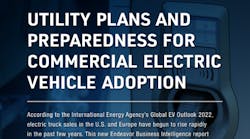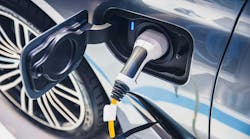Download the report: Utility Plans and Preparedness for Commercial Electric Vehicle Adoption.
Even with the disruptions of the last two years, electric vehicle sales have been growing. Most of the growth has occurred with electric passenger vehicles. Commercial electric vehicles (CEVs) are still a small portion of vehicle sales. Still, according to the International Energy Agency’s Global EV Outlook 2022, electric truck sales in the United States and Europe have begun to rise rapidly in the past few years, driven by an increase in available models in those markets, policy support, rapidly improving technical viability and economic competitiveness of electric trucks in certain applications.
Fleet owners are taking a closer look at purchasing electric vehicles. Operating costs are becoming more important as fleets plan for future vehicle turnover. Higher gas prices, at least for now, are drawing attention to the lower cost of electricity as fuel. Then there is the total cost of ownership (TCO) of CEVs According to the North American Council for Freight Efficiency, early adopters of CEVs are validating an acceptable TCO in urban medium-duty vans and trucks, terminal tractors and short regional haul applications.
An uptick in the adoption of CEVs in the United States is noted in Endeavor’s 2022 Commercial Vehicle Adoption Report. Only 8% of fleets reported operating even a single electric truck in 2021 In 2022,that percentage doubled to 16% The top motivation for fleet owners’ consideration of CEVs is in researching future vehicle needs In 2021, the top motivation was concern for the environment. The environment moved to the number two spot in 2022.
Fleet owners do have concerns about purchasing CEVs. Does the total cost of ownership (upfront costs and operating expenses) make sense? Will there be sufficient charging infrastructure to handle trip cycles without reducing margins on fleet assets? Are the stranded costs of early replacement of internal combustion engine (ICE) vehicles acceptable? Utilities will play a role in addressing these questions.
Fleet owners and utilities recognize that transportation electrification will require new and deeper partnerships. While utilities are experienced in building out infrastructure to meet increased electricity demand, utility companies are new to understanding the diverse needs of CEVs. On the other hand, fleets know about refueling ICEs, but not the optimal electric infrastructure for locating charging depots.
With that in mind, Endeavor Business Intelligence conducted a research survey on the impact of CEVs on the utility industry. The survey, conducted in March 2022, received responses from 319 utility personnel.
Download the report: Utility Plans and Preparedness for Commercial Electric Vehicle Adoption.


